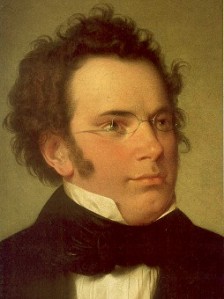My blog friend musiqdragonfly recently wrote about the art of rubato. This subject is very interesting because there are many varying opinions about it. Rubato in Italian means stolen. In music, the musician usually “steals” time, by going faster or slower than the indicated tempo. Viewpoints on the use of rubato vary from conservative to unconventional. A conservative musician tends to play with little to no rubato. A more liberal approach would be to take more time in certain places, even though it’s not written in the score. I believe there is not one right or wrong answer. I myself prefer a balance between a strict tempo and rhythmic freedom. The musician should not dismiss the rhythm and music entirely, but should be free to take time wherever he or she feels it’s natural and appropriate. I don’t particularly like the musicians or critics who feel everything should be perfectly in time; they don’t allow the music to naturally surge and recede, to breath and flow beautifully.
Some musicians think music should be played in strict tempo. However, if you listen to live recordings of Rachmaninoff, Grieg, Shostakovich, or Bartok playing their own music, they sometimes dismiss their own tempo markings, playing slower or faster! When it comes to Beethoven, some argue his metronome did not work properly, or he was not able to hear it properly because of his deafness, therefore his tempo markings aren’t what he intended. Many think his tempos are too fast and restrict the music. Here is a quote from Beethoven that suggests how his tempo markings should be interpreted: “100 according to Maelzel (inventor of the metronome)−but this should be applied to the first bar only−for feeling also has its own tempo which cannot be expressed by this figure.”
How are we supposed to know exactly what the composer wanted? The word adagio, for example, is often written in music scores, meaning slow. But slow is very vague. Exactly how slow should a piece be played? When composers write a specific tempo marking, we supposedly know exactly how fast to play a piece. But a counter argument is provided when composers played their own music; sometimes they played with many rubatos, and did not adhere strictly to their own markings. Are tempo markings a general tempo guideline, or a strict confinement to play by?
Unfortunately these are difficult questions to answer, since we often cannot talk directly to the source, the composer. Therefore, a musician should play how he thinks the music should be played. In theory, any interpretation of the music is equally valid, and the audience will be more compelled if the musician is confident in his own interpretation. Thus, a musician shouldn’t try to play how other people tell him to, or how he thinks people want to hear the music. He should be confident in his own musical instincts. A quote from David Soyer of the Guarneri Quartet summarizes these ideas nicely, “I recall an occasion when we were rehearsing in Paris with Arthur Rubenstein (famous pianist). He was practicing the Scherzo of the Faure Piano Quartet in G minor. I drew his attention to the fact that he was playing it much more slowly than the metronome marking. He turned the metronome on, checked the tempo, and said, ‘Oh, yes, but that’s only for the first bar.’”




